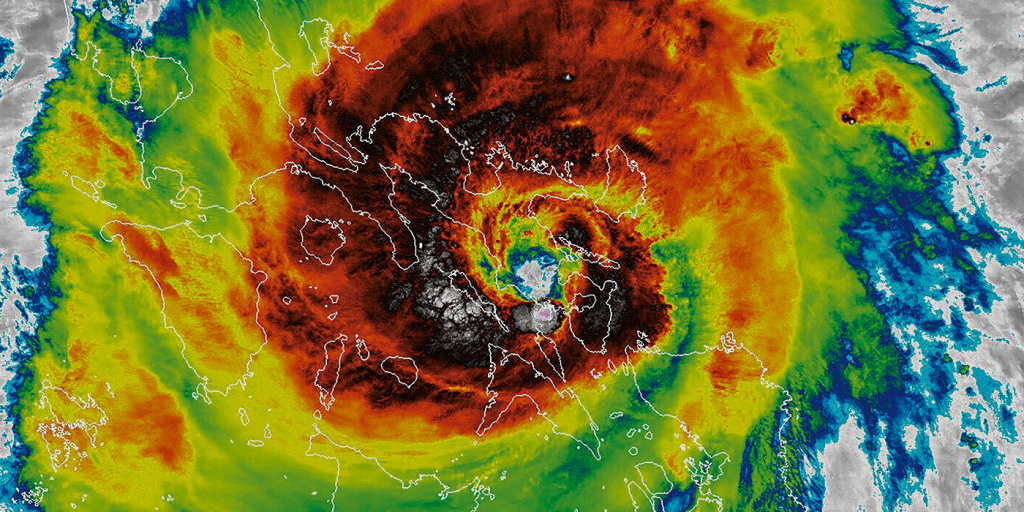CARTA Distinguished Lecture
Modeling and Simulation for
Reducing the Risks Associated with
Extreme Weather
Dr. Robert Atlas
Research Professor & Global Coordinator for CARTA
Director Emeritus/ NOAA Atlantic Oceanographic and Meteorological Laboratory
11:00-12:00 ET Wednesday, 10 February 2021
WebEX link
The reduction of losses related to hurricanes and other extreme weather phenomena involves many complex aspects ranging from purely theoretical, observational, computational, and numerical, to operational and decisional. A correct warning can lead to proper evacuation and damage mitigation, and produce immense benefits. However, over-warning can lead to substantial unnecessary costs, a reduction of confidence in warnings, and a lack of appropriate response. In this chain of information, the role played by scientific research is crucial.
The National Oceanic and Atmospheric Administration (NOAA), in combination with the National Aeronautics and Space Administration (NASA), other agencies, and universities is contributing to these efforts through observational and theoretical research to better understand the processes associated with extreme weather. This includes model and data assimilation development, Observing System Experiments (OSE), and Observing System Simulation Experiments (OSSE) designed to ascertain the value of existing observing systems and the potential of new observing systems to improve weather prediction and theoretical understanding. This high-level talk, which was first given as the Keynote address at the 2019 Winter Simulation Conference, will describe innovative research for developing advanced next-generation global and regional models to improve weather prediction, and the application of OSSEs to optimize the observing system.
Dr. Robert Atlas is the former Chief Meteorologist at NASA’s Goddard Laboratory for Atmospheres and is Director Emeritus of the National Oceanic and Atmospheric Administration’s (NOAA) Atlantic Oceanographic and Meteorological Laboratory in Miami, Fla. Some of the areas he focused his research on included the prediction, movement, and strengthening of hurricanes. He has worked with both satellite data and computer models as a means to study these hurricane behaviors.
Dr. Atlas received his Ph.D. in Meteorology and Oceanography in 1976 from New York University. Prior to receiving the doctorate, he was a weather forecaster in the U.S. Air Force where he maintained greater than 95 percent forecast accuracy. From 1976 to 1978, Dr. Atlas was a National Research Council Research Associate at NASA’s Goddard Institute for Space Studies, New York, an Assistant Professor of Atmospheric and Oceanic Science for SUNY, and Chief Consulting Meteorologist for the ABC television network.
In 1978, Dr. Atlas joined NASA as a research scientist. He served as head of the NASA Data Assimilation Office from 1998-2003, and as Chief meteorologist at NASA GSFC from 2003-2005. Dr. Atlas has performed research to assess and improve the impact of satellite data on numerical weather prediction since 1973. He was a key member of the team that first demonstrated the significant impact of quantitative satellite data on numerical weather prediction and is the world’s leading expert on Observing System Simulation Experiments, a technology that enables scientists to determine the quantitative value of new observing systems before funds are allocated for their development.
He served as a member of the Satellite Surface Stress Working Group, the NASA Scatterometer (NSCAT) Science Team, the ERS Science Team, the SeaWinds Satellite Team, the Working Group for Space-based Laser Winds, the Scientific Steering Group for GEWEX, the Council of the American Meteorological Society, and as Chairman of the U.S. World Ocean Circulation Experiment (WOCE) Advisory Group for model-based air-sea fluxes. He is currently a member of the Science Teams for two NASA space missions.
From 1974-1976, he developed a global upper-ocean model and studied oceanic response to atmospheric wind forcing as well as large-scale atmospheric response to sea surface temperature (SST) anomalies (unusual events). In more recent years, his research concentrated on the role of how the air and sea interact in the development of cyclones, the role of soil moisture and unusual SST events in the initiation, maintenance, and decay of prolonged heatwaves and drought, and most recently on the modeling and prediction of hurricane formation, movement, and intensification.
He is a recipient of the NASA Medal for Exceptional Scientific Achievement and the American Meteorological Society’s Banner I. Miller Award. In 2019, just prior to his retirement from NOAA, he was honored by the National Hurricane Center for Enduring Contributions to the nation’s hurricane forecast and warning program, and by the U.S. House of Representatives for his service to the nation.
